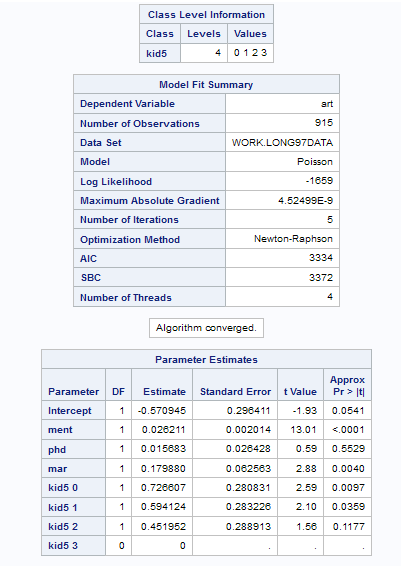Count Data Regression Task
About the Count Data Regression Task
Count data regression
fits regression models where the dependent variable has nonnegative
integer or count values.
Note: The version of the task depends
on what version of SAS/ETS is available at your site. For example,
if your site is running SAS 9.4 (or earlier), SAS Studio is running
version 1 of the Count Data Regression task. If you are running the
first maintenance release for SAS 9.4, SAS/ETS 13.1 is available,
and SAS Studio is running version 2 of the Count Data Regression task.
The difference between the two versions is the addition of new options
in SAS/ETS 13.1.
Example: Count Data Regression
To create this example:
-
Create the WORK.LONG97DATA data set. For more information, see LONG97DATA Data Set.
Assigning Data to Roles
Setting Options
Copyright © SAS Institute Inc. All rights reserved.

